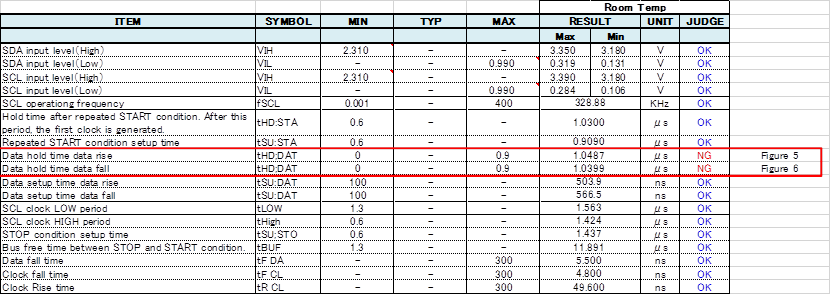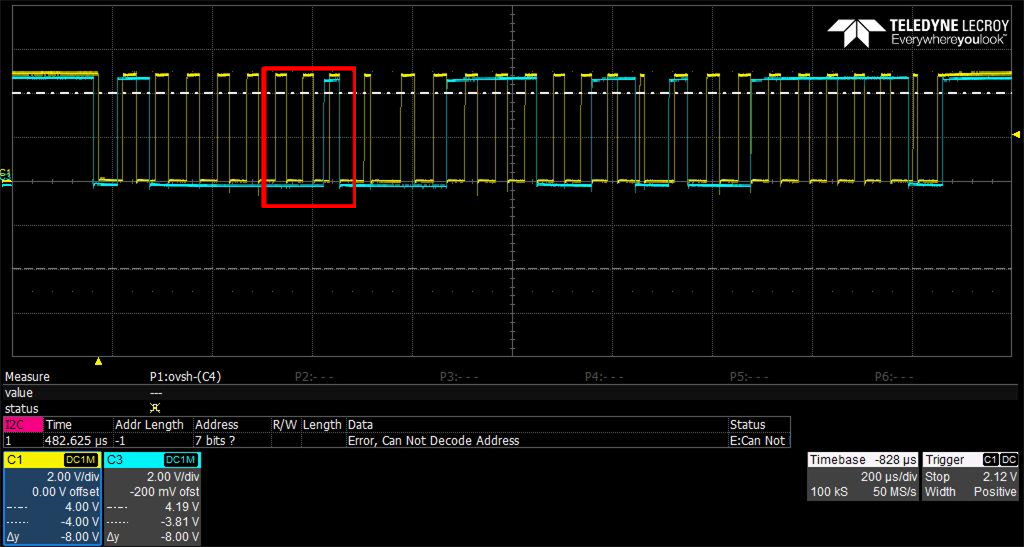On the customer evaluating INA219B, I2C Data hold time is over the definition range.
⇒Required 900ns_max at Fast Mode (Datasheet page-6), but below test results are near 1000ns.
I think that test results should keep definition range, but tHD spec is depend on fSCL spec.
(Foe example; If in the case of fSCK:340kHz, tHD range will be ease)
Is it correct? If correct, please let me know about the relation for fSCL and tHD spec.
Best regards,
Satoshi








